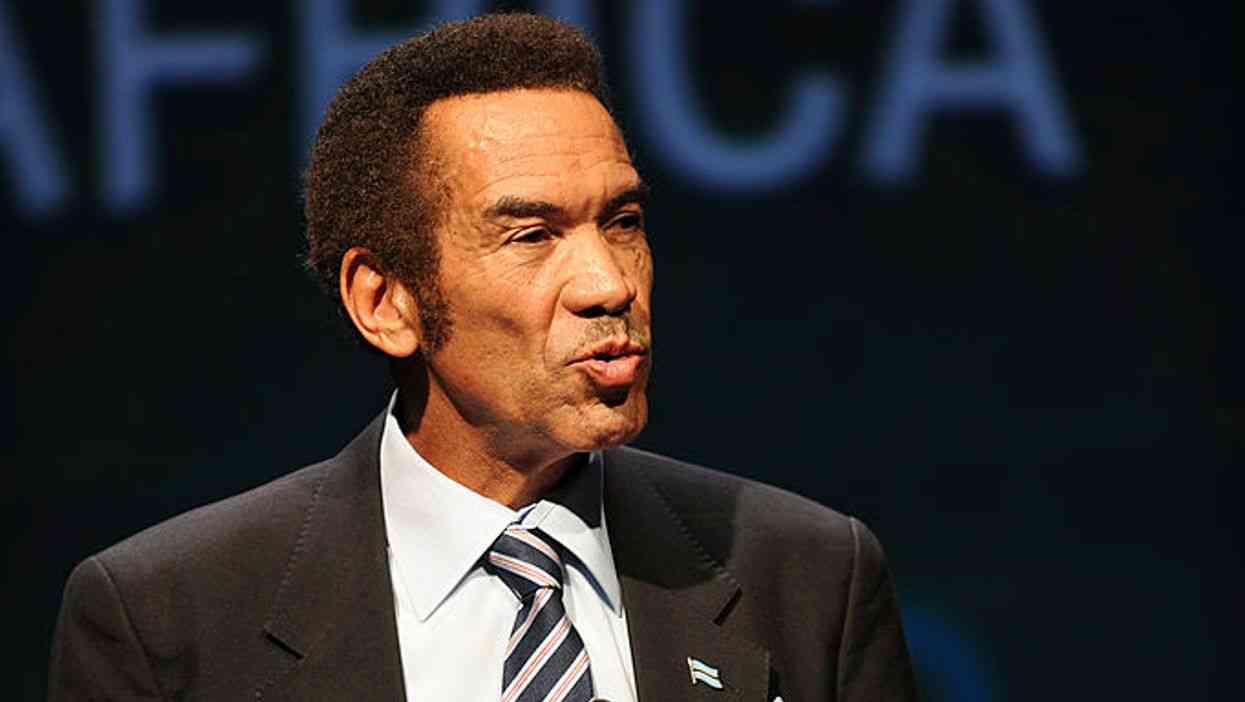
news In depth: Obey Manayiti
POACHING in the Hwange region, mostly driven by wealthy foreign nationals, continues to impact nearby communities, despite spirited and coordinated efforts by the government and its partners to curb the crime.
Although official government figures show a decline in poaching in the country overall, a visit to the region has revealed that poaching activities continue to harm surrounding communities, giving government officials and their partners a hard time in beating the criminals at their game.
On approaching Hwange National Park, Zimbabwe’s largest and most famous wildlife reserve, motorists are greeted by road signs depicting the park’s animals.
They include the “big five”: lion, buffalo, leopard, elephant and rhino.
As you get closer, signs of the animals increase — on the outskirts of the park, tree barks chewed by elephants are easily visible, and lions scatter in the middle of the road.
Zimbabwe has almost 84 000 elephants, exceeding the carrying capacity of 50 000.
Almost half of the elephants are in the Hwange region. The elephant population has been ballooning over the years, hence the influx of poachers too.
- Chamisa under fire over US$120K donation
- Mavhunga puts DeMbare into Chibuku quarterfinals
- Pension funds bet on Cabora Bassa oilfields
- Councils defy govt fire tender directive
Keep Reading
The Zimbabwe Parks and Wildlife Management (ZimParks), working with partners, say they have managed to control the rampant poaching activities and last year only approximately 20 elephants were lost as compared to 300 in 2013.
ZimParks say rhino poaching has almost been contained and the rhinos are largely in safe, enclosed areas.
Hwange National Park is dotted with luxury safari lodges for foreign tourists, but despite their expensive price tags, many neighbouring communities are still impoverished.
Chief Nelukoba Dingane of the Mabale area, a community in the wildlife corridor adjacent to the park, said some people in his community were trying hard to fight poaching while others are not motivated to do so as they feel they were not meaningfully or financially benefiting from the local resource.
“Just two days ago a problem elephant, one which strays into people’s homesteads and sometimes destroys fields among other destructions, was killed but the bulk of the meat was taken away,” said Chief Dingane.
“[Local] people should get something because when the animals come to our areas, they destroy the fields and…people lose everything.”
He said he started seeing an increase in poaching about five years ago, but that in recent months and years the crime had significantly decreased.
Many of the poachers are linked to foreign-driven syndicates who hire members of the community to help them track the animals, he added.
“There are people with guns,” he said.
“Most of the poachers come through Zambia and some are even arrested although others are evasive in their operations.
“They work with our people who are just given money for beer, but the poachers from Zambia get a lot of money. They get US dollars.”
Other members of the same community run a voluntary anti-poaching unit and collaborate with a non-profit organisation, Painted Dog Conservation, that focuses its activities on the endangered African wild dog, which is often caught in snares meant for bigger animals.
Community members patrol the area to check if there are snares planted, waylaying the suspected poachers to apprehend them by using patrol dogs.
They use social media apps like WhatsApp groups to spread information.
Painted Dog Conservation operations manager David Kuvawoga says the partnership with villagers in fighting poaching is paying off.
He said since 2001, almost 30 000 snares (wire traps) had been removed.
They also use data logging technology: an open-source and freely available spatial monitoring and reporting tool (Smart), which includes the use of GPS for monitoring poaching activities and measures the effectiveness of wildlife law enforcement patrols and site-based conservation activities.
“As the scale of poaching went up, we also had to beef up our anti-poaching work,” Kuvawoga said.
“Poachers seem to graduate from subsistence…if he sees that it is working, he moves up until they deal in ivory and others, so we need to tame them before they graduate.”
He added that although the organisation focuses on wild dogs, other species also benefit from their efforts because in removing a snare, you remove the threat for other kinds of animals too.
Conservation and Wildlife Fund field coordinator Steve Alexander said poachers typically used guns or poisoned the animals.
“The guys that are coming in with rifles are targeting big elephants, the guys that are deploying cyanide get whatever comes along. It might be a calf or big elephant,” he said.
Alexander added that the number of incidences in the park was on the decline. “The number has reduced quite significantly,” he said.
Alexander said poaching must be fought on many fronts, among them through education.
He said the youth were sometimes easily lured into poaching, although it was not as lucrative in Zimbabwe as in other countries like Mozambique.
“Some people will see the fast buck that is made from poaching and the immediate gratification of having lots of cash and go and buy new things like cellphones and bling,” Alexander added.
Cellphones are also a weapon in the fight against poaching.
Bejane Trust’s (“bhejane” is the local Ndebele name for black rhino) Trevor Lane says ivory poaching in Matetsi/Hwange is being led by both Zambians and locals.
He said in some instances top buyers operate from Lusaka, sometimes with the cooperation of the Zambian authorities.
“Each gang would have a hunter with a heavy weapon, a protection guy with an AK 47, and porters — up to 20 — to carry food in and ivory out,” he said.
“They would go and camp in the back areas, especially during the rains, and only target big elephant bulls.”
Lane says over the past year there had been increased and more aggressive patrols. Other digital tools are being rolled out to help prevent poaching, he said.
“The average poacher on the ground only has a cellphone in our area, but the pro rhino poachers have sophisticated equipment such a rifle silencer, red point scopes used for aiming when using guns, and radios to intercept signals,” he said.
Safari Operators’ Association of Zimbabwe (Soaz) leader Emmanuel Fundira says poaching in the country is largely being driven by demand from outside, mainly the Asian continent.
He calls it a complex underworld, where some people come from outside and lure locals into sneaking into the parks to poach.
He says foreigners bribe their way in the system to take out the ivory from the country, moving it first from Hwange into major centres like Bulawayo or Harare.
Zimbabwe’s porous borders and ineffective monitoring systems have been pointed as a driver in poaching activities.
Some poaching rings come from as far away as the Middle East and Asia.
In December 2017, authorities managed to intercept 200kg of ivory at the Robert Gabriel Mugabe International Airport that was destined for the Middle East.
Currently seven Chinese nationals arrested in Hwange on poaching missions are facing trial for alleged possession of 20,98kg of rhino horns valued at $1 million, following a raid last year by authorities at a rented Victoria Falls house.
ZimParks spokesperson Tinashe Farawo said they had arrested more than 600 people involved in poaching in 2018, as compared to 425 in 2017.
He said more than 100 rounds of ammunition were recovered in 2018.
Arrests were on the rise as anti-poaching operations increased, he added, noting that in 2017, 65 people were sentenced to at least nine years in jail, while in 2018 nearly 70 were convicted.
As a result, poaching has been decreasing “since the coming-in of our new boss at ZimParks Fulton Mangayi, who has introduced several refresher courses for rangers to keep them abreast with global trends”, Farawo said.
ZimParks is increasing cross-border controls in collaboration with law enforcement agents from neighbouring countries.
They are using social media to share information, but often some unscrupulous people exploit tools like WhatsApp and Facebook messenger to mislead them and send fake updates to intercept their work. They hope to roll out more digital operations in the future, but they currently lack resources.
Late last year, Soaz complained that they were facing challenges in the importation of globally used digital tools such as anti-poaching drones and unmanned aerial vehicle systems (UAVS) because of government bottlenecks.
The mandatory sentence for poaching is nine years in jail, but Kuvawoga said the judiciary was handing down leaner sentences and letting them down in the fight against poaching.
“The guys on the ground make some arrests, but most of the people that are taken to the judiciary system are getting community service and this is not really a deterrent,” he said.
“We need serious sentences so that people think twice before going into the bush.”
Despite the good work of the anti-poaching taskforce, there are widespread reports of some politicians and law enforcement agents being involved in poaching activities or facilitating the illegal movement of ivory.
The country’s former first lady Grace Mugabe was in 2018 accused of abusing her position and colliding with others in poaching.
ZimParks submitted a report to the police on the matter although there hasn’t been any successful prosecution.
λ This story was produced by The Standard and written as part of the ‘Reporting the Online Trade in Illegal Wildlife’ programme. This is a joint project of the Thomson Reuters Foundation and The Global Initiative Against Organised Crime funded by the Government of Norway. More information at http://globalinitiative.net/initiatives/digital-dangers. The content is the sole responsibility of the author and the publisher.










